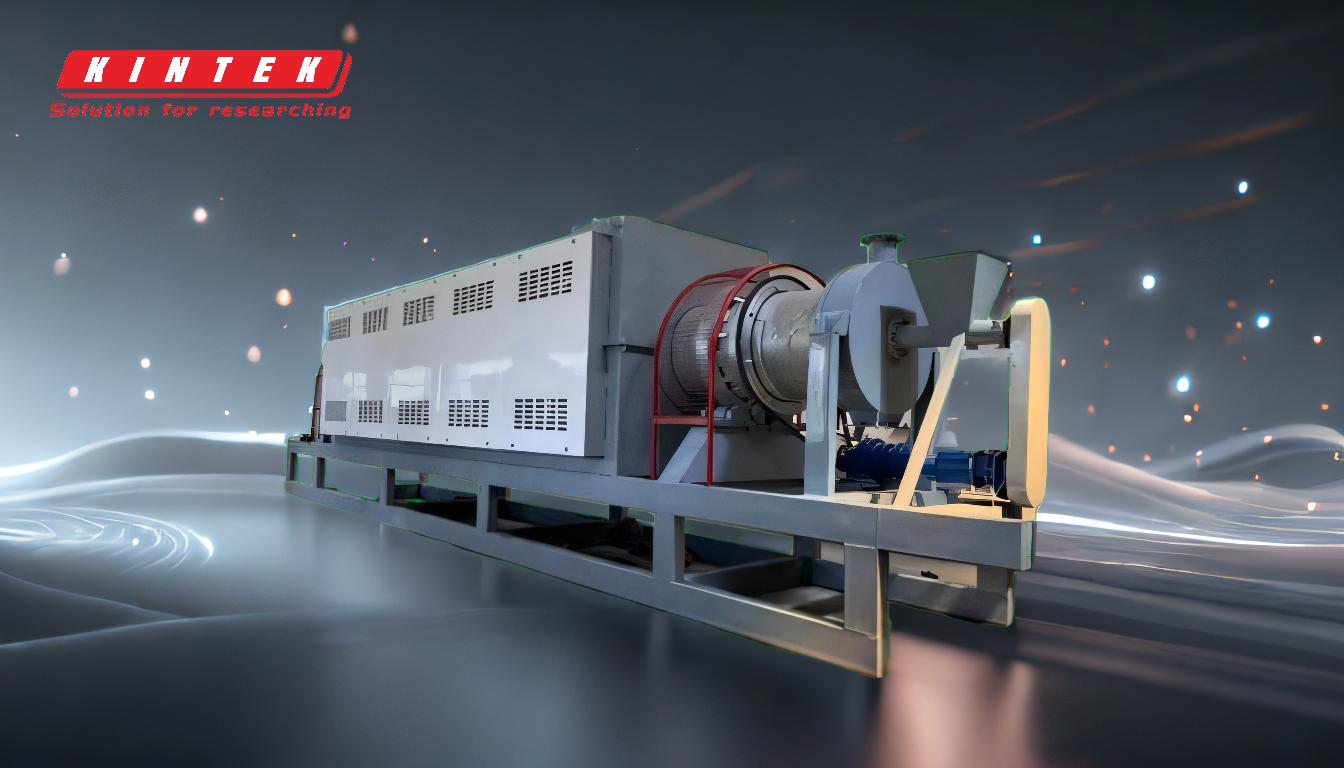The yield of oil in pyrolysis of tires typically ranges between 35% to 55%, depending on the type of pyrolysis process and the specific conditions under which it is carried out. For instance, continuous waste tire pyrolysis plants can achieve oil yields of 45%-55%, while other sources suggest a yield of approximately 300kg of pyrolysis oil from a ton of tires, which translates to about 30% yield. The variation in yield is influenced by factors such as the pretreatment of the tires, the pyrolysis temperature, and the efficiency of the pyrolysis system. Higher yields are often associated with continuous pyrolysis systems that ensure thorough heating and precise temperature control.
Key Points Explained:
-
Typical Oil Yield Range:
- The oil yield from pyrolysis of tires generally falls between 35% to 55%. This range is influenced by the type of pyrolysis process and the specific conditions employed during the process.
- For example, continuous waste tire pyrolysis plants are reported to achieve oil yields of 45%-55%.
-
Yield from a Ton of Tires:
- From a ton of tires, the pyrolysis process can yield approximately 300kg of pyrolysis oil, which is about 30% of the total weight of the tires.
- This yield is part of the overall output, which also includes carbon black, steel, and gas.
-
Factors Affecting Oil Yield:
- Pretreatment of Tires: Breaking down the tires into smaller pieces (3-5cm) ensures that they are fully heated and pyrolyzed, leading to a higher oil yield.
- Pyrolysis Temperature: Precise control of the pyrolysis temperature is crucial for maximizing oil yield. Continuous pyrolysis systems often have better temperature control, which contributes to higher yields.
- Type of Pyrolysis Process: Continuous pyrolysis plants are generally more efficient and can achieve higher oil yields compared to batch processes.
-
Comparison with Other Materials:
- The oil yield from tires is comparable to other rubber materials. For instance, rubber cables, leather, and shoe soles also yield around 35% oil.
- However, the yield from tires can be higher in continuous pyrolysis systems, reaching up to 55%.
-
Economic and Environmental Implications:
- Higher oil yields from tire pyrolysis can make the process more economically viable, as the oil can be used as a fuel or further refined into other products.
- Efficient pyrolysis processes also contribute to environmental sustainability by converting waste tires into valuable resources, reducing the need for landfill disposal.
In summary, the oil yield from pyrolysis of tires is influenced by several factors, including the type of pyrolysis process, pretreatment of the tires, and precise temperature control. Continuous pyrolysis systems tend to offer higher oil yields, making them a more efficient and economically viable option for tire recycling.
Summary Table:
| Factor | Impact on Oil Yield |
|---|---|
| Typical Yield Range | 35% to 55% (higher in continuous pyrolysis systems) |
| Yield from 1 Ton | ~300kg (30%) of pyrolysis oil, plus carbon black, steel, and gas |
| Pretreatment | Tires broken into 3-5cm pieces ensure thorough heating, increasing yield |
| Pyrolysis Temperature | Precise temperature control maximizes yield, especially in continuous systems |
| Process Type | Continuous systems achieve higher yields (45%-55%) compared to batch processes |
Discover how continuous pyrolysis systems can optimize your oil yield—contact us today for expert guidance!










